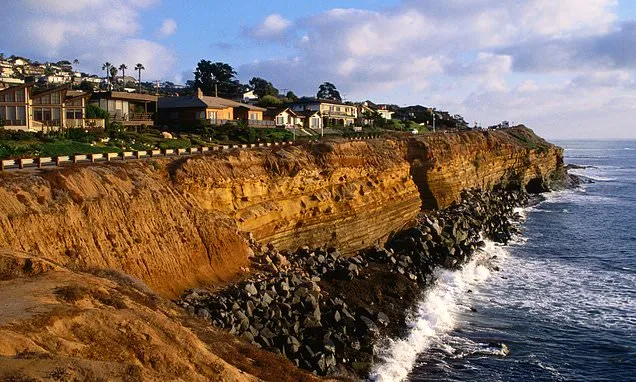San Diego's most popular beaches are set for major changes under a new city plan aimed at combating sea-level rise - sparking pushback from residents who say the proposals go too far.
The City Council has unanimously approved its Coastal Resilience Master Plan, a wide-ranging blueprint that reimagines its treasured beach communities including Sunset Cliffs, Ocean Beach, Tourmaline Surf Park, and parts of Mission Beach and La Jolla Shores. The plan replaces traditional seawalls and other hard infrastructure with nature-based solutions like sand dunes, berms, and pedestrian trails.
City officials say the goal is to protect public spaces, private property, and infrastructure from worsening coastal erosion and flooding but residents say the city is trading common sense for climate ideology. Community groups are raising alarms about how the changes - such as narrowing traffic lanes, altering beach access, and potentially introducing paid parking - could impact daily life and the character of these well-loved shoreline neighborhoods. 'This does not seem well thought out,' said Scott McCaskill of the Ocean Beach Community Foundation in a tense public hearing. We've received nearly universal condemnation to the idea of installing any paid parking at the cliffs or OB. This is not about protecting the coast - it's about pushing a political agenda,' McCaskill said.
Among the most extreme proposals is the plan to narrow Sunset Cliffs Boulevard to a single lane and begin charging drivers to park - a last-minute addition that blindsided many residents and community groups. The iconic cliffside drive, long considered a sanctuary for surfers, families, and tourists, could be dramatically reshaped with traffic lanes replaced by bike paths and walking trails, and crucial beach access potentially lost. Others warn that rerouting traffic through residential neighborhoods would create dangerous bottlenecks and erode community safety.
Javier Saunders of the Peninsula Community Planning Board said the plan ignores historical precedent. 'While nature-based solutions may provide some environmental benefit,' he said, 'they are inadequate on their own to protect public infrastructure. The U.S. Army Corps of Engineers saved Sunset Cliffs in the 1970s using old-school seawalls and engineering - not sand dunes.'
Originally a focal point of the new plan, Mission Beach was abruptly yanked from the city's list of fast-tracked projects after lifeguards raised alarm about narrowed beach access and blocked rescue routes. Without being a priority, the project now lacks a guaranteed funding stream - joining a similar delay at La Jolla Shores, where the city proposed a new 'seatwall' in the existing parking lot to function as both a seawall and a public bench. Councilmember Joe LaCava, who represents Pacific Beach and La Jolla, defended the plan saying, 'What we had yesterday won't be there tomorrow unless we take action today.' But critics argue that LaCava and his colleagues are gutting traditional coastal protections and prioritizing climate optics over practical solutions.
The Dog Beach area of Ocean Beach is another flashpoint, where the city wants to build elevated sand dunes to prevent flooding while simultaneously creating pedestrian and bike paths along the shoreline. At Tourmaline Beach the plans include reconfiguring stormwater access and adding vegetated dunes. To many, it's a utopian fantasy divorced from the real-world needs of beachgoers. In an attempt to quell the fury, Councilmember Jennifer Campbell tried to downplay the plan's scope. 'These are conceptual ideas,' she insisted. 'We are in the trying-to-figure-it-out phase.' But such reassurance did little to pacify locals, who fear the damage will be irreversible long before any 'engineering analysis' is completed.
Kelley Stanco, assistant planning director, admitted the designs are high-level and will require years of study before construction begin - but critics fear it is merely a formality and that the decision has all but been approved. Environmental groups have lined up in support. More than a dozen organizations submitted a joint letter endorsing the plan, arguing it will enhance habitat, improve recreation access, and help meet the city's obligations under Climate Resilient SD - a broader initiative launched in 2021 targeting climate adaptation for low-income neighborhoods. According to city projections, sea levels may rise up to 7 feet by 2100, putting an estimated $8 billion in commercial sales and thousands of businesses at risk countywide.
Already, about $150-230 million in city-owned infrastructure could be vulnerable by 2050 if no action is taken. Councilmember Stephen Whitburn warned the council not to delay. 'San Diego's 17 miles of coastline are what make this city special,' he said. 'They face real threats from flooding and erosion that are only expected to worsen. This plan sets our coastline up for long-term success.' But longtime residents aren't so sure. Many say the real threat isn't climate but the city's own bureaucratic overreach, which could forever alter the character of the beaches that define San Diego's identity. 'They call it resilience,' McCaskill said.'But we call it destruction.'
